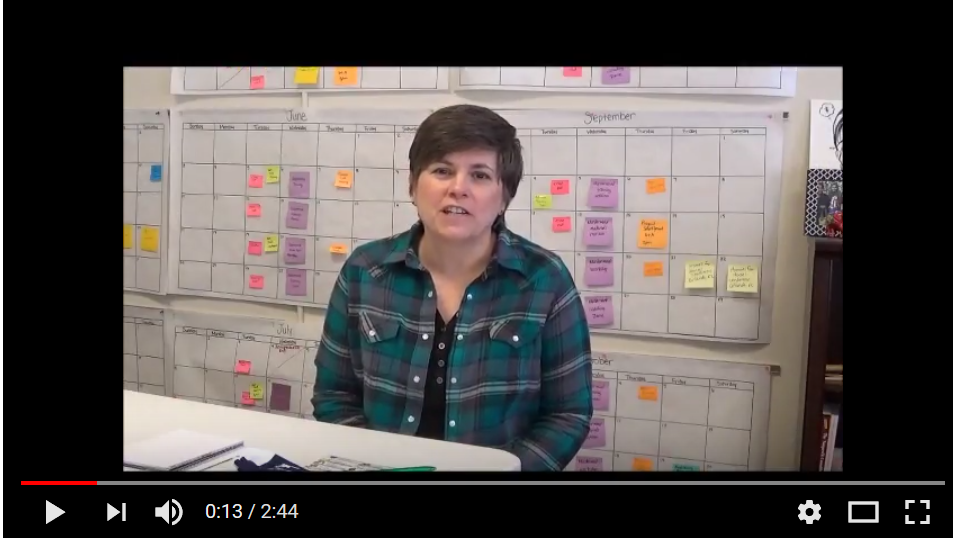 Everything changes over time. Fundraising tactics are no exception.
Everything changes over time. Fundraising tactics are no exception.
When I look back on my early days of fundraising (nearly 20 years ago), I see there are things we did then that we don’t do now. And vice versa.
When you’re new (or newish) to fundraising, it’s easy to choose fundraising methods that you remember seeing someone else doing simply because you don’t know what else to do.
In other words, we use what we’ve seen before as a model for what we should do next.
Before you do that, you need to realize that time has a way of changing things. That cool event you saw 10 years ago may not work now. Those fundraising strategies you remember from your childhood might need an update.
So, here’s a look at some old fundraising tactics that still work, some that no longer work and some new ones that you definitely need to consider.
Old fundraising tactics that still work
1. Direct mail. The rumors of the death of direct mail are greatly exaggerated. Raising money through the postal service still works – if you do it right. You can’t rent any old list or slap words on a page and mail it. You need a strategy and a carefully-chosen ask to motivate people to send a donation back to you. And there’s a LOT that depends on the things you do when you’re not asking for money that plays into the success of your mailing, like how well you communicate with your donors, the stories you share, and how you make them feel.
2. Print newsletters.Several years ago, many well-intentioned nonprofits decided to ditch their print newsletter in favor of an email version simply to save money. For some organizations, that was a big mistake. You know what works best? Sending your newsletter in the format you donors want. If they want print, send print. If they want email, send email. Don’t guess – ask them. Oh, and if your newsletter is crap, it doesn’t matter what format you use, they still won’t respond.
 3. Thermometers. The old “help us reach our goal” thermometers don’t work anymore, but you know what does work? Thermometers that show the number of ______ you’re trying to provide to those who depend on you. Don’t focus on the money goal – focus on the good you’re doing and show people how you’re working to eliminate a waiting list. They’ll get on board to help you with that.
3. Thermometers. The old “help us reach our goal” thermometers don’t work anymore, but you know what does work? Thermometers that show the number of ______ you’re trying to provide to those who depend on you. Don’t focus on the money goal – focus on the good you’re doing and show people how you’re working to eliminate a waiting list. They’ll get on board to help you with that.
4. Monthly giving.People love to support the work that fires up their heart, and if you give them a chance, they’ll give monthly. Starting a monthly giving program is one of THE most effective strategies that has survived over time and one that every growing nonprofit should utilize today. Who doesn’t want a predictable stream each month?
5. Tapping into your sphere of influence. The power of relationships will never go away in donor- based fundraising. Growing your donor base can be as simple as tapping into the people you know and the people they know. Think about friends and family first, then go further into your network by reaching out to people you do business with (vendors) and acquaintances.
Old fundraising tactics that don’t work now (or have changed)
1. People gave just because. Fifty years ago, people gave to support the good work of the local nonprofits (which there were fewer of). Now, when people give it’s more of a social investment. Today’s donor is savvy and wants to know exactly how their money will be used to change lives. They give to nonprofits with good reviews and those they have an experience with. They’re more skeptical and want to see proof that your nonprofit will succeed. This all means that it’s more important than ever to build trust with donors and prospects so they see your nonprofit as one capable of fulfilling its mission.
2. Work place giving. Nonprofits like Community Chest and United Way used to own work place giving, but it’s changed. There are fewer big companies in any given town and way more freelancers, solopreneurs, and small businesses. Plus, these smaller enterprises are more interested in supporting nonprofits whose missions align with that of their business.
3. Guilt fundraising/premiums. It used to be common to receive a direct mail piece with a “gift” inside as a way to motivate people to give. I’ve received pens, notepads, and everyone’s favorite, address labels. I’ve also gotten socks, gloves, calendars, and a jacket. Most donors want to see as much as possible of their donation go to your programs, not to buy ‘stuff’ you might send them. Don’t try to guilt people into giving.
Watch this 2.5 minute video where I explain more about guilt fundraising:
4. Reply envelope in the thank-you letter. If you’re sending out a lot of thank you letters, it’s tempting to include a reply envelope on the outside chance that the donor might want to give again. Heck, I’ve done it, and raised thousands that way. But you know what I found out? I could raise MORE money overall if I didn’t do it. Let the thank-you letter be a thank-you letter, and make sure you have asks scattered throughout the year. You’ll avoid wearing out your donors by always showing up with your hand out for money.
New things you need to be doing
 1. Build trust on purpose. Years ago, people trusted nonprofits and assumed they had high standards of ethics and integrity. They were doing good work after all! These days, we know that nonprofits are just as capable of scandal as for-profit businesses. When a charity gets a black eye, it impacts all of us. By proactively working to build trust with your donors and your community, you can avoid losing donors the next time a scandal hits a big charity nationwide or one in your town.
1. Build trust on purpose. Years ago, people trusted nonprofits and assumed they had high standards of ethics and integrity. They were doing good work after all! These days, we know that nonprofits are just as capable of scandal as for-profit businesses. When a charity gets a black eye, it impacts all of us. By proactively working to build trust with your donors and your community, you can avoid losing donors the next time a scandal hits a big charity nationwide or one in your town.
2. Show your impact. The days are gone when you could raise money with a message like “give because we’re a charity doing good.” These days, donors want to know what impact you’re having and you need to be ready to detail how your programs are making a difference. You can’t just say you’re helping kids in your tutoring program – you need to talk about how their reading scores are improving or how gang violence has decreased in your neighborhood and how your programs played a role.
3. Segment your list. It doesn’t work to send one message to your whole list, because people have different interests and experiences with your nonprofit. With the databases available to us today, you can easily customize your communications so that volunteers get a message specific to them, donors get a different message, and prospects get something different than that. It helps build engagement when people feel you’re speaking directly to them and understand their perspective.
4. Respond immediately. We live in the age of Amazon and Netflix. People want instant downloads and immediate receipts for online donations. Make sure your system can deliver and that the messages are warm and friendly in your online donation receipts. If your idea of an online donation is for someone to download a form, print it, fill it out and mail it in, you’re a dinosaur and you need to get your nonprofit into this century. Donors won’t give because that’s just too much work.
5. Sell tickets online. Find a way to offer online ticket sales for your next event if you don’t already have it in place. And make it possible to purchase a ticket with the fewest number of clicks possible. People don’t want to work hard to get their ticket to your event, so make it easy for them or you’ll miss out on some sales.
6. Offer payment options. Be ready to accept cash, checks, Paypal and all major credit cards. You may balk because you have to pay merchant fees to accept credit cards, but listen, it’s the price of doing business and it’s worth it.
7. Have a good, updated website. Lots of people will check you out online before they give. Make sure your nonprofit’s website is warm and welcoming, and easy to navigate. If people can’t figure out in a couple of seconds if they’re on the right page or if they can’t figure out where to find the info they’re looking for, you have work to do.
So, the bottom line here is this: Don’t keep doing something just because it’s always been done. Do something because it WORKS for your nonprofit.
You’ll be happier, your donors will be more satisfied, and you’ll raise more money.







Good Artice
Thanks for this article! Do you have any practices for engaging donors who you’ve had a relationship with in the past, but they are no longer responding?
Hi Emily, first see if you can figure out what happened to the relationship. Did your nonprofit drop the ball, did the donor get bored, did communication fall to the wayside? If you can uncover what happened, you can figure out how to fix it. If you have a phone number, call them just to check in and see how they’re doing. Give them an update if they seem interested. People usually drift away when they no longer feel valued or when someone alienates them. Or maybe something happened in their life (death, divorce, lost their job, etc.) and they aren’t able to support you. Do some detective work to see what you can find out, then figure out the logical next step to mend the relationship.